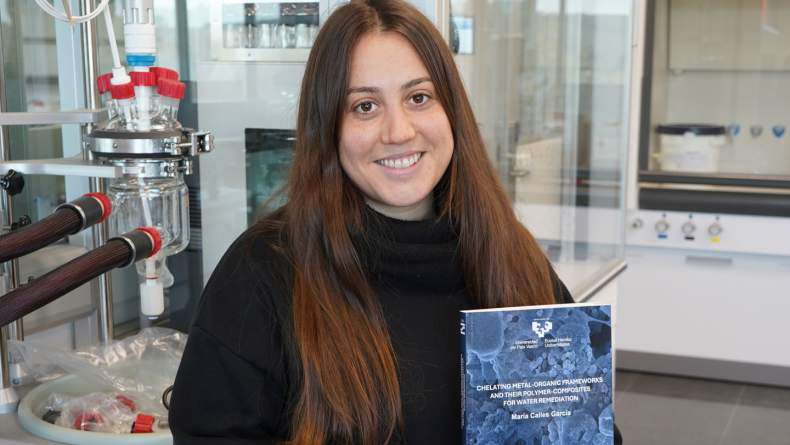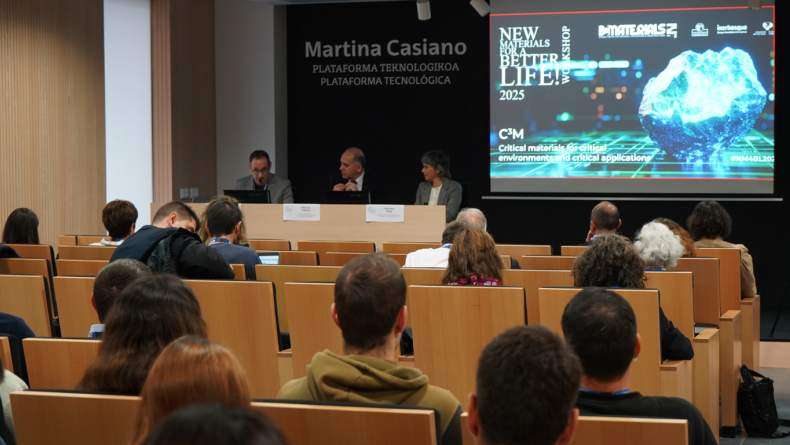BCMaterials Fortnightly Seminars #19

“Thermally Induced Solid-State SCSC Transformations Promoted by Gradual Dehydration in a Highly Porous Polyoxovanadate Hybrid”
Jagoba Martín Caballero
(BCMaterials)
Solid state single crystal to single crystal (SCSC) transformations of coordination polymers (CP) have recently acquired a remarkable attention and they turned out to be a promising research field in material science. Such transformations, which usually involve both bond breakage and formation, often bring forth dramatic structural and property changes like color, magnetism, luminescence, gas adsorption/selection and such, comparing with those of the parent complex. However, SCSC transformations are relatively uncommon due to the inherent difficulty to harvest XRD-quality single crystal for further tests after applying external estimuli (heat, light, chemical reactions,…) that causes said transformation. This drawback is specially true for large clusters such as polyoxometalates. Nevertheless, SCSC transformations are worth studying because they constitute a powerful synthetic technique to obtain multifunctional materials that can’t be prepared through conventional methods.
In this seminar, sequential thermally triggered SCSC reversible transformations promoted by gradual dehydration of a highly porous polyoxovanadate hybrid [{Cu(cyclam)}(VO3)2]·5H2O (1) are discussed.
“Magnetoelastic materials and their use as sensors”
Ariane Sagasti Sedano
(BCMaterials)
Most ferromagnetic materials show magnetostriction, that is they elongate under the action of a magnetic field. The opposite effect also happens, that is under an applied mechanical stress the magnetic state of the material will change. This last is called magnetoelasticity. Both phenomena indicate conversion of magnetic into elastic energy, and viceversa, property that is very useful to develope sensors.
Among ferromagnetic materials, amorphous ferromagnetic ribbons show excellent magnetomechanical properties, and specially iron rich alloys show high magnetoelastic coupling coefficient and are very suitable for applications in sensors and transducers. For this purpose, one of the most used configuration uses the ferromagnetic amorphous material as resonant element. This resonant frequency will be not only dependent on the applied magnetic bias field H, but also will shift in response to different physical parameters as pressure, temperature, stress and mass loading. As an example, coating the magnetoelastic sensor with a mass changing chemically responsive layer enables realization of chemical or biological sensors.
Related news
María Calles, New Doctor of BCMaterials
We would like to congratulate María Calles García for obtaining her PhDs in Materials Science and Technology from the UPV/EHU. On December 4 made a brilliant defense of her thesis titled ‘Chelating…Invited Talk with Barcelona Microelectronics Institute’s researchers (December 3)
On December 3 at 12:00 PM, in the Martina Casiano Auditorium in Leioa, BCMaterials will host senior researchers Antón Guimerà and Xavier Illa from the Barcelona Microelectronics Institute (IMB-CNM,…Invited Talk by Liu Yao on Lithium-Metal Batteries (December 2)
Next Monday, December 2, Liu Yao, professor at the Shanghai Institute of Applied Physics, will give an invited lecture at BCMaterials entitled ‘Li-Metal Batteries: From Liquid to Solid-State’. The…Success of BCMaterials’ Annual Workshop on Critical Materials
The 2025 edition of BCMaterials’ annual workshop gathered nearly one hundred participants on November 19 in Leioa to review the latest advances and discuss critical materials, their applications, and…



